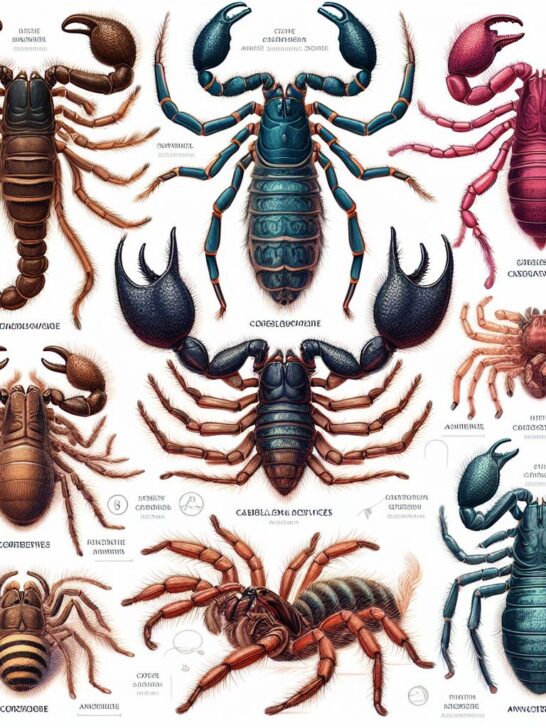Spiders and scorpions share certain physical features and behaviors that can lead to confusion between the two arachnid groups. Some spider species have evolved to closely resemble scorpions, either as a form of mimicry or due to convergent evolution. In this comprehensive article, we will delve into several types of spiders that exhibit scorpion-like characteristics, exploring their physical traits, habitats, behaviors, and unique adaptations.
Post Contents
1. Scorpion Spiders (Genus: Platyoides)
Scorpion spiders belong to the genus Platyoides and are known for their striking resemblance to scorpions, particularly in their body shape and posture.
- Physical Characteristics: Scorpion spiders have elongated bodies with two prominent pincers at the front, resembling scorpions. They have eight legs and a segmented abdomen, often with markings or patterns for camouflage.
- Size, Color, and Weight: Sizes vary depending on the species, ranging from a few millimeters to several centimeters. Colors range from brown to black, with some species displaying intricate patterns. Weight is typically negligible.
- Lifespan: Scorpion spiders typically live for several months to a few years, depending on environmental factors and predation.
- Prey and Diet: They primarily feed on small insects and arthropods, using their pincers to capture and immobilize prey before consuming them.
- Behavior: Scorpion spiders are nocturnal hunters, using their keen sense of touch and vision to locate prey. They may also exhibit defensive behaviors when threatened, such as raising their front legs or retreating to a sheltered location.
- Habitat: Found in various habitats across Africa and Madagascar, including forests, grasslands, and semi-arid regions. They prefer areas with ample prey and suitable shelter.
- Web: Scorpion spiders typically do not construct webs for hunting but may use silk for shelter or egg-laying.
- Temperament: Generally shy and non-aggressive, scorpion spiders will usually avoid confrontation but may defend themselves if provoked.
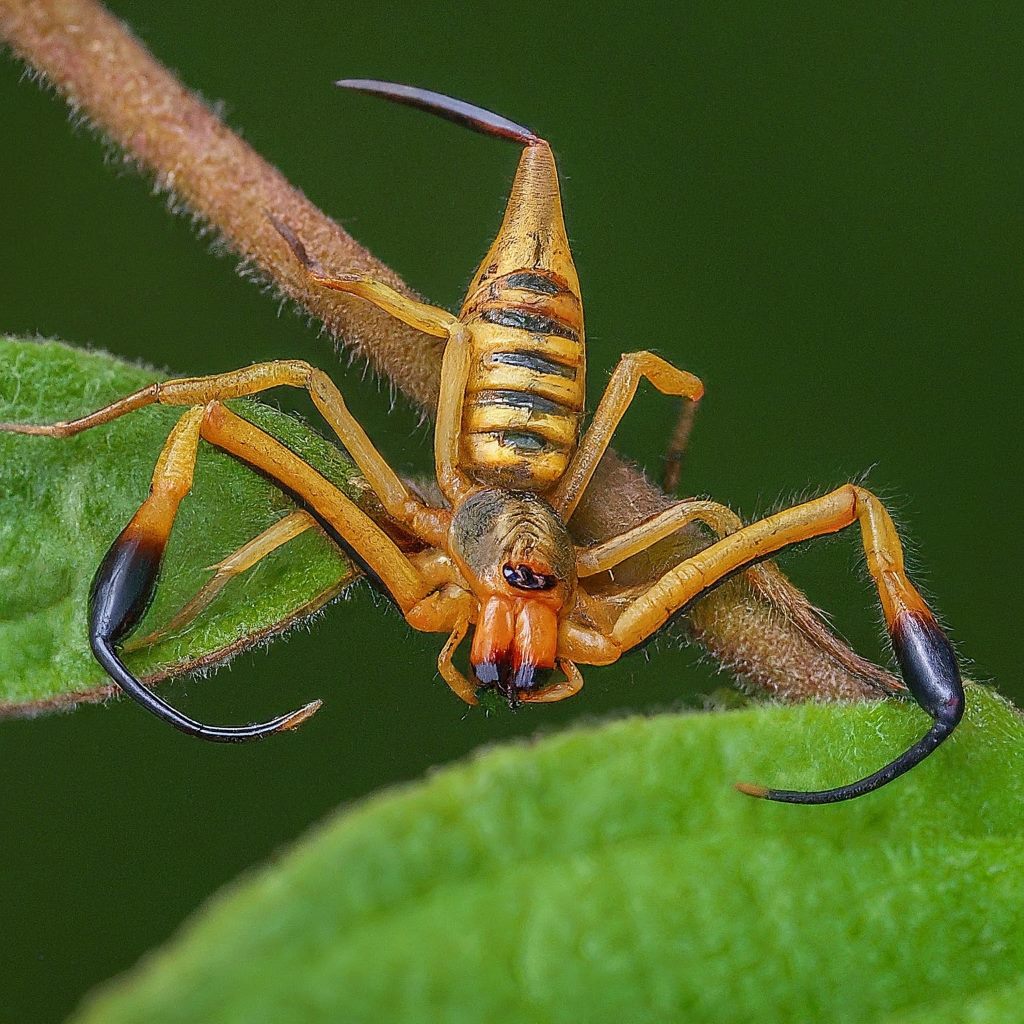
Here are some species under the Platyoides genus: 1-16
- Platyoides alpha
- Platyoides costeri
- Platyoides fitzsimonsi
- Platyoides grandidieri
- Platyoides leppanae
- Platyoides mailaka
- Platyoides pictus
- Platyoides pirie
- Platyoides pusillus
- Platyoides quinquedentatus
- Platyoides ravina
- Platyoides rossi
- Platyoides vao
- Platyoides velonus
- Platyoides venturus
- Platyoides walteri
These spiders are primarily found in various regions of Africa, including Madagascar, Namibia, Kenya, Tanzania, and South Africa. They exhibit elongated bodies, pedipalps resembling scorpion claws, and often adopt a defensive posture similar to scorpions when threatened.
2. Pseudoscorpions
Pseudoscorpions are another group of arachnids that share similarities with scorpions, particularly in their overall body shape and the presence of pincers.
- Physical Characteristics: Pseudoscorpions have flattened bodies with two large pincers resembling scorpions, but they lack a stinger. They have eight legs and a segmented abdomen.
- Size, Color, and Weight: Pseudoscorpions are tiny creatures, ranging from 2 to 8 millimeters in length. Colors vary but often include shades of brown or yellow. They are extremely lightweight.
- Lifespan: Pseudoscorpions can live for up to several years, depending on environmental conditions and food availability.
- Prey and Diet: They feed on small arthropods such as mites, springtails, and insect larvae. Pseudoscorpions are efficient hunters, using their pincers to grasp and subdue prey.
- Behavior: Pseudoscorpions are secretive and nocturnal, preferring to hide in leaf litter, soil, or under bark during the day. They are solitary creatures but may engage in courtship rituals during the breeding season.
- Habitat: Found worldwide in diverse habitats, including forests, grasslands, and urban areas. They are often associated with moist environments where prey is abundant.
- Web: Pseudoscorpions do not spin webs but may use silk to construct retreats or cocoons for their eggs.
- Temperament: Generally non-aggressive towards humans, pseudoscorpions will retreat if disturbed but may use their pincers defensively if threatened.
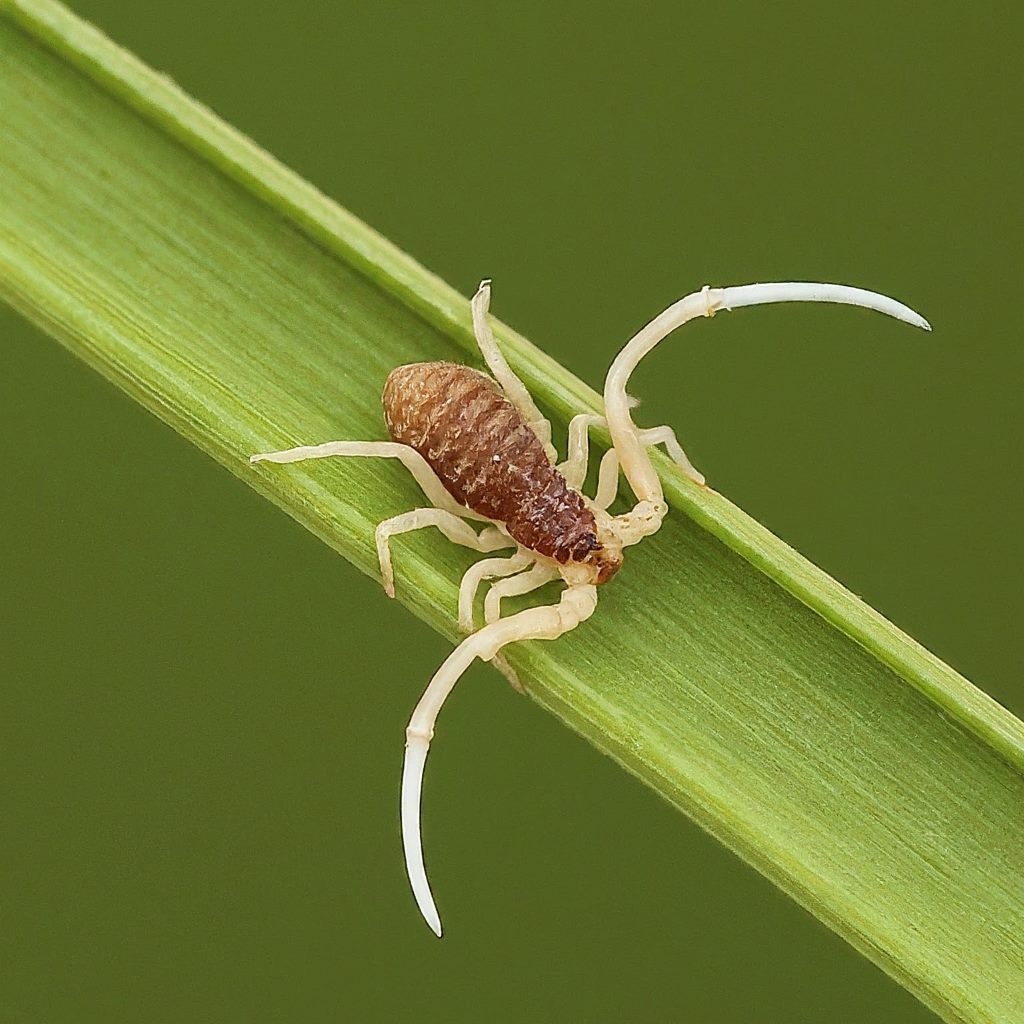
Here are a few species of pseudoscorpions: 17-19
- Chelifer cancroides
- Garypus Californicus
- Pseudogarypus Bicornis
These tiny arachnids are distributed across North America, Europe, Africa, and Australia. Despite their small size, they possess formidable pincers that they use to capture prey and defend themselves against predators, resembling miniature versions of scorpions.
3. Whip Spiders
Whip spiders, also known as tailless whip scorpions, belong to the order Amblypygi and share some physical characteristics with scorpions, including their elongated bodies and front appendages.
- Physical Characteristics: Whip spiders have elongated bodies with long, slender legs and antenniform front appendages resembling whips. They lack venomous stingers or pincers and are harmless to humans.
- Size, Color, and Weight: Whip spiders range in size from 13 to 22 millimeters in length. They are typically brown or tan in color, with some species displaying mottled patterns. Weight is minimal.
- Lifespan: Whip spiders can live for several years in captivity, but lifespan in the wild is not well-documented.
- Prey and Diet: They primarily feed on small insects and arthropods, using their long legs to capture prey. Whip spiders are ambush predators, lying in wait for passing prey before striking with their front appendages.
- Behavior: Whip spiders are nocturnal hunters, using their keen sense of touch and vibration to detect prey. They are also skilled climbers, using their strong legs to navigate through vegetation.
- Habitat: Found in warm, humid regions of the Americas, including forests, caves, and rocky habitats. They prefer areas with ample hiding spots and prey.
- Web: Whip spiders do not spin webs but may use silk to construct shelters or egg sacs.
- Temperament: Generally shy and non-aggressive, whip spiders will typically retreat if threatened but may use their front appendages defensively if cornered.
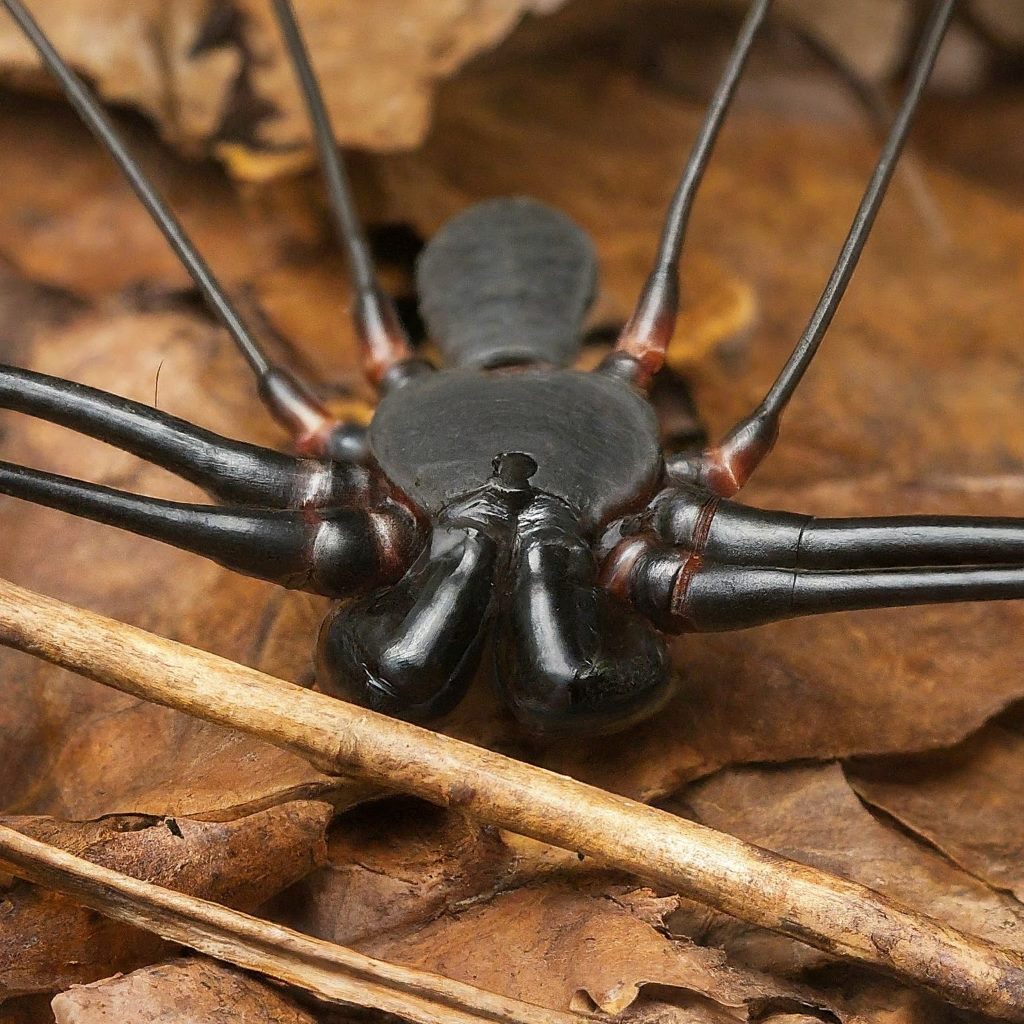
Here are a couple of species of whip spiders: 20-21
- Paraphrynus Carolynae
- Phrynus Operculatus
These whip spiders are found in regions such as Arizona, Texas, and Mexico. While they lack a scorpion’s stinger, their front appendages resemble scorpion claws, and they may exhibit similar defensive postures when threatened.
4. Camel Spiders
Camel spiders, also known as wind scorpions or solifuges, are not true spiders but are often mistaken for them due to their appearance.
- Physical Characteristics: Camel spiders have flattened, elongated bodies with eight long legs and large chelicerae (mouthparts). They lack venom glands and do not possess a stinger or venomous bite.
- Size, Color, and Weight: Sizes vary depending on the species, ranging from a few centimeters to over 15 centimeters in length. Colors typically range from tan to brown, helping them blend into their arid habitats. They are relatively lightweight.
- Lifespan: Camel spiders can live for several years in the wild, with some individuals reaching up to five years or more.
- Prey and Diet: They are voracious predators, feeding on a variety of small animals including insects, spiders, scorpions, and even small vertebrates like lizards and rodents. Camel spiders use their powerful chelicerae to crush and consume their prey.
- Behavior: Camel spiders are primarily nocturnal hunters, using their keen sense of smell and vibration detection to locate prey. They are fast runners and agile climbers, enabling them to pursue prey across diverse terrain.
- Habitat: Found in arid and semi-arid regions worldwide, including deserts, scrublands, and rocky habitats. They are well-adapted to extreme temperatures and can survive in harsh environments with limited water availability.
- Web: Unlike true spiders, camel spiders do not produce silk or spin webs for hunting or shelter. They rely on their speed and agility to capture prey.
- Temperament: While camel spiders may appear intimidating due to their large size and aggressive appearance, they are generally harmless to humans and will typically avoid confrontation. However, they may exhibit defensive behaviors if threatened, such as raising their front legs or hissing.
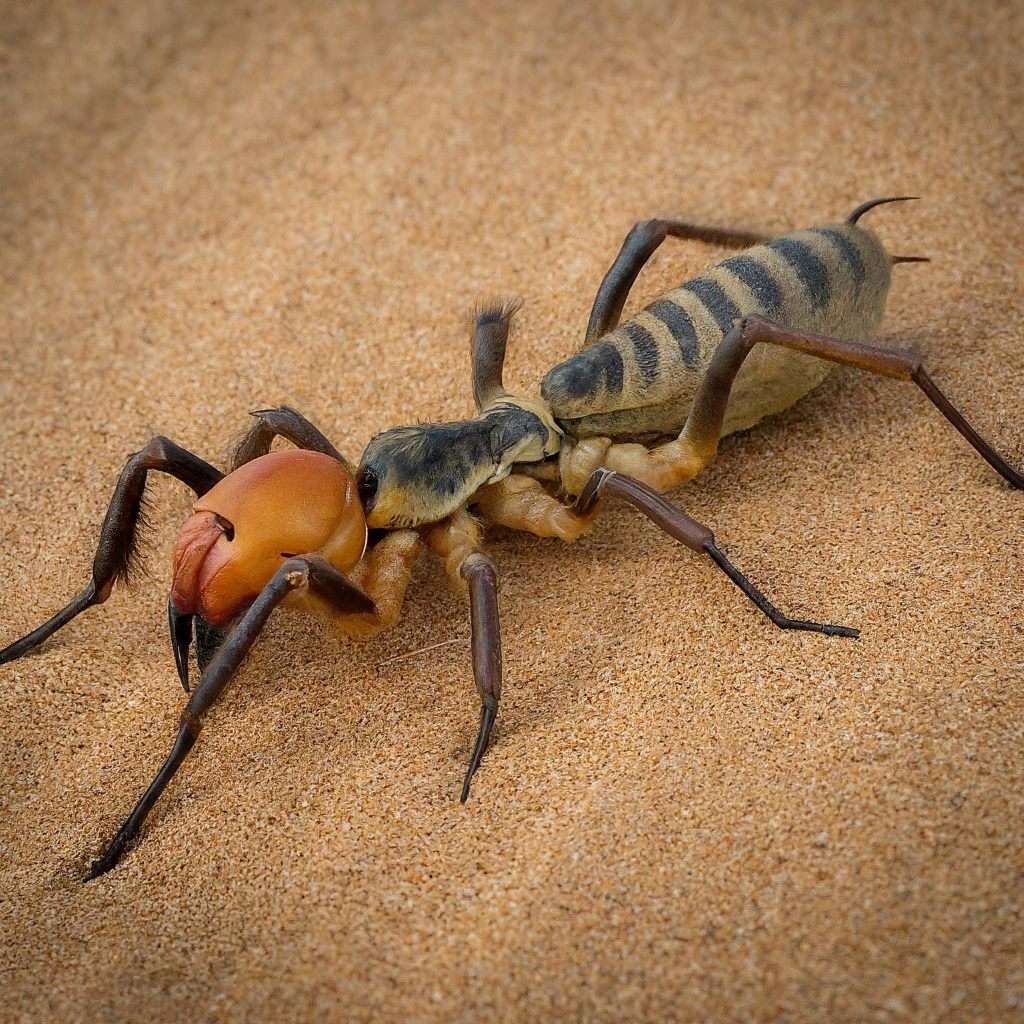
Here are some species of camel spiders: 22-29
- Eremorhax Magnus
- Eremobates Pallipes
- Eremocosta striata
- Eremobates Palpisetulosus
- Ammotrechella Setulosa
- Galeodes arabs
- Galeodes granti
- Metasolpuga picta
These arachnids are primarily found in desert regions across North America, Africa, and the Middle East. They possess elongated bodies and formidable jaws, giving them a scorpion-like appearance, although they lack a scorpion’s tail and venomous sting.
5. Other Scorpion-Like Spiders
In addition to the aforementioned groups, there are other spider species that exhibit scorpion-like characteristics. Some examples include:
Spotted Tailless Whip Scorpion (Phrynus marginemaculatus) 30
- Physical Characteristics: The spotted tailless whip scorpion has an elongated body with eight long, thin legs and antenniform front appendages. They lack venom glands and are not true scorpions, despite their appearance.
- Size, Color, and Weight: Adults can reach lengths of up to 5 centimeters. They are typically brown or tan in color with darker spots or markings, providing camouflage in their natural habitat. They are relatively lightweight.
- Lifespan: The lifespan of the spotted tailless whip scorpion is not well-documented but is estimated to be several years in the wild.
- Prey and Diet: They primarily feed on small insects and arthropods, using their front appendages to capture and subdue prey. Spotted tailless whip scorpions are nocturnal hunters, relying on their keen sense of touch and vibration to locate prey.
- Behavior: These creatures are solitary and nocturnal, hiding during the day in leaf litter, under rocks, or in crevices. They are agile climbers and can move quickly over various surfaces.
- Habitat: Found in tropical and subtropical regions of the Americas, including forests, caves, and leaf litter. They prefer humid environments with ample hiding spots and prey.
- Web: Spotted tailless whip scorpions do not produce silk or spin webs but may use silk to construct shelters or egg sacs.
- Temperament: Generally shy and non-aggressive, spotted tailless whip scorpions will retreat if disturbed but may use their front appendages defensively if cornered.
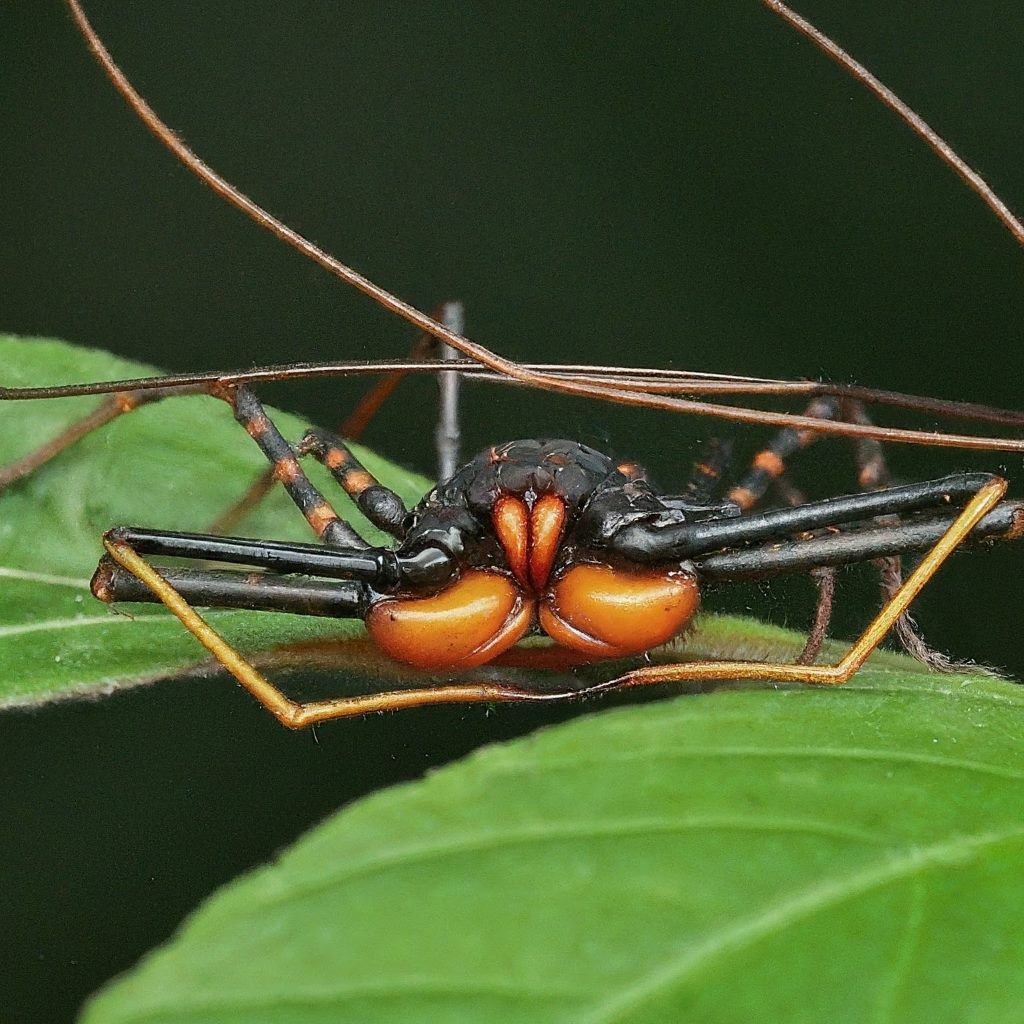
Black-Tailed Spider (Arachnura melanura 31
- Physical Characteristics: The black-tailed spider has a distinct flattened body with long, slender legs and a segmented abdomen. Its most notable feature is its long, whip-like tail, which gives it a scorpion-like appearance. However, this tail is non-venomous and primarily used for sensory purposes.
- Size, Color, and Weight: Adults can reach lengths of up to 2 centimeters, with females typically larger than males. They are predominantly brown or tan in color, with darker markings on the abdomen and a black tail, providing effective camouflage in their habitat. They are lightweight creatures.
- Lifespan: The lifespan of black-tailed spiders varies, but they typically live for one to two years in the wild.
- Prey and Diet: These spiders are nocturnal hunters, feeding primarily on small insects and arachnids. They use their long legs to capture prey and inject venom to immobilize it before feeding.
- Behavior: Black-tailed spiders are solitary creatures that prefer hiding during the day in leaf litter, under rocks, or in vegetation. They emerge at night to hunt for prey, using their keen sense of touch and vibration detection to locate food.
- Habitat: Found in various habitats across Australia, including forests, woodlands, and urban areas. They prefer sheltered environments with ample hiding spots and prey.
- Web: Black-tailed spiders are not known for building webs for hunting but may construct silk retreats or egg sacs for protection and reproduction.
- Temperament: Generally docile and non-aggressive, black-tailed spiders will retreat if threatened but may use their venom defensively if provoked. Bites are rare and typically result from accidental encounters.
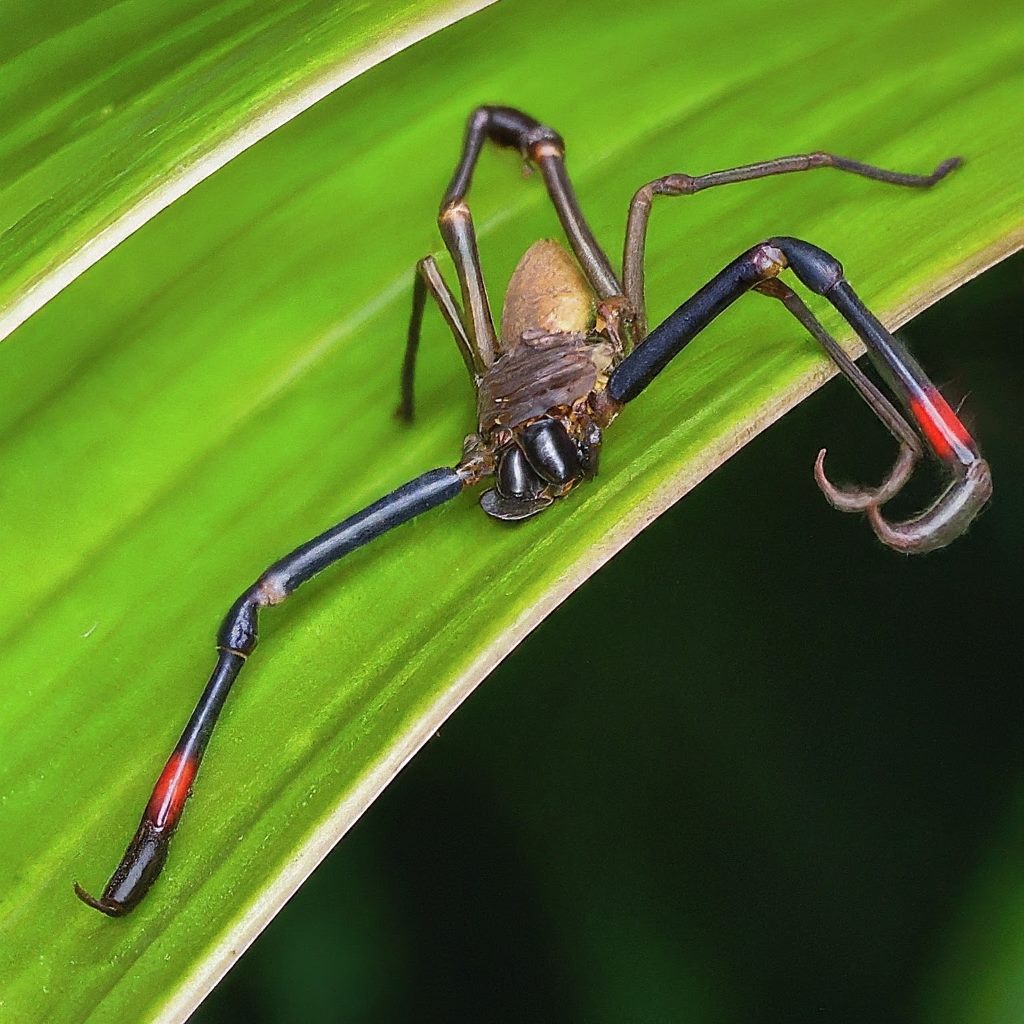
Scorpion Tail Spider (Arachnura higginsi) 32
- Physical Characteristics: The scorpion tail spider has a similar appearance to the black-tailed spider, with a flattened body, long legs, and a distinctive whip-like tail. It is named for its resemblance to a scorpion, although it is not venomous and lacks a stinger.
- Size, Color, and Weight: Adults can reach lengths of up to 2 centimeters, with females being larger than males. They are typically brown or tan in color with darker markings on the abdomen and a black tail, providing effective camouflage in their environment. They are lightweight creatures.
- Lifespan: Scorpion tail spiders have a lifespan of one to two years in the wild.
- Prey and Diet: They feed primarily on small insects and arachnids, using their long legs to capture and immobilize prey before consuming it. Scorpion tail spiders are nocturnal hunters, relying on their keen sense of touch and vibration detection to locate food.
- Behavior: These spiders are nocturnal and solitary, preferring to hide during the day in leaf litter, under rocks, or in vegetation. They emerge at night to hunt for prey, using their agility and speed to capture food.
- Habitat: Found in various habitats across Australia, including forests, woodlands, and urban areas. They prefer sheltered environments with ample hiding spots and prey.
- Web: Scorpion tail spiders do not build webs for hunting but may construct silk retreats or egg sacs for protection and reproduction.
- Temperament: Like black-tailed spiders, scorpion tail spiders are generally docile and non-aggressive. They will retreat if threatened but may use their venom defensively if provoked. Bites are rare and typically result from accidental encounters.
Conclusion
In conclusion, several types of spiders exhibit physical characteristics or behaviors that closely resemble those of scorpions. From scorpion spiders to pseudoscorpions, whip spiders, camel spiders, and other scorpion-like spiders, these arachnids showcase the diverse forms and adaptations found within the arachnid lineage. By exploring the unique traits of each type of spider, we gain a deeper understanding of the complex interplay between morphology, behavior, and ecological niche in the natural world.
In the next sections, we will delve into each type of spider in more detail, examining their appearance, habitat, behavior, and notable adaptations that contribute to their scorpion-like resemblance.

94% of pet owners say their animal pal makes them smile more than once a day. In 2007, I realized that I was made for saving Animals. My father is a Vet, and I think every pet deserves one. I started this blog, “InPetCare”, in 2019 with my father to enlighten a wider audience.
